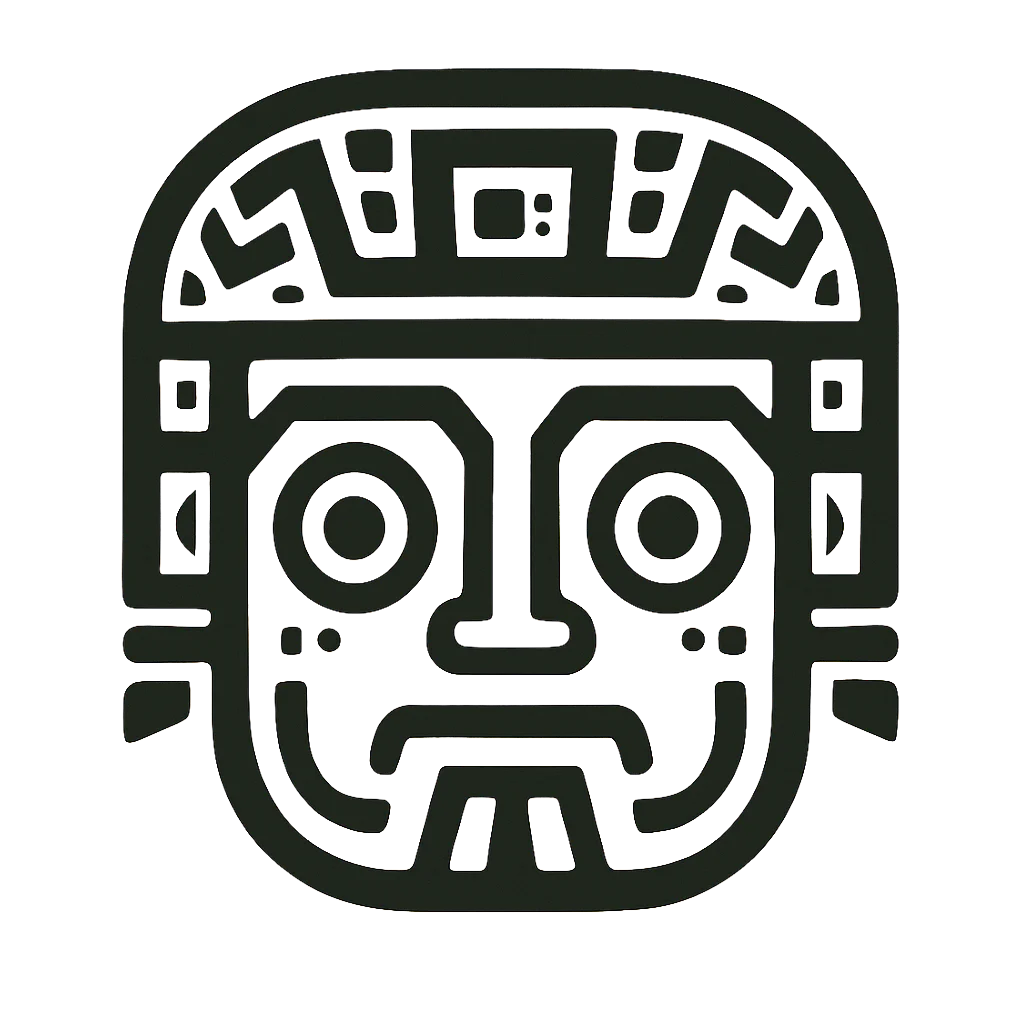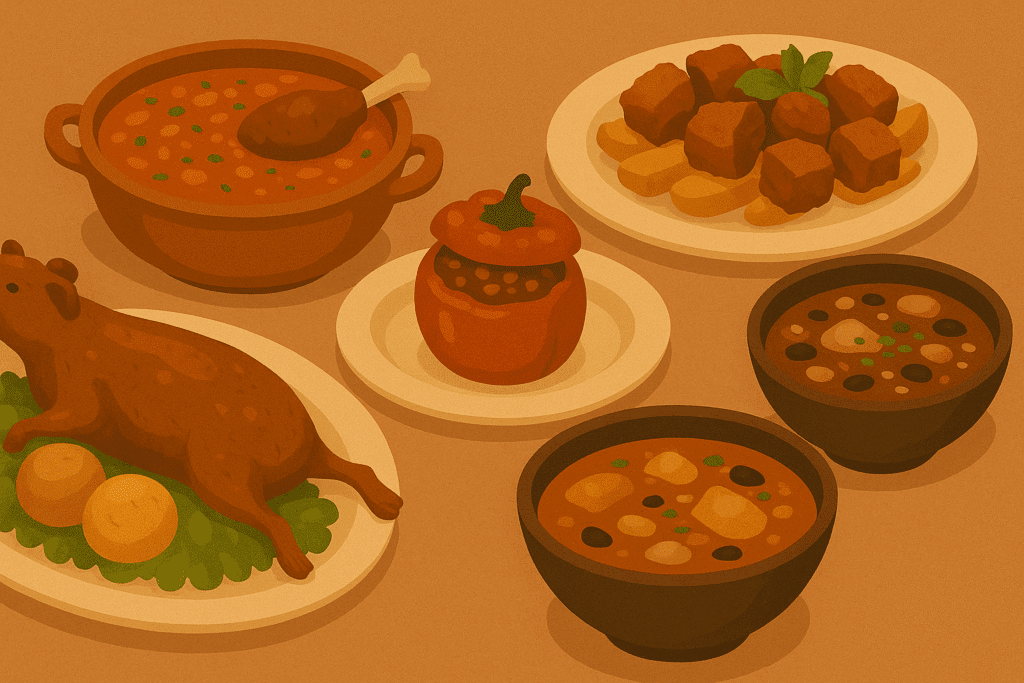El Chiri Uchu It is not only one of the oldest and most complete Andean Peruvian dishes, it is also a symbol of Cusquenian identity. Its name comes from the Quechua words: Chiri meaning “cold” and uchumeaning ‘chili’ which we would understand as “cold spicy”, which gives us the best clue about how it is served: completely cold, but full of flavor.
With the arrival of the Spaniards, the dish was adapted and entered into the festive calendar of the Patron Saint Sebastian and the Corpus Christi, integrating new ingredients such as chorizo and cheese. Today, it is consumed exclusively in January and June, during the religious festivities and the Jubilee month of Cusco.
📜History
El Chiri Uchu has deep pre-Hispanic roots. It was a part of ancestral ceremonies such as the Inti Raymiwhere offerings were made to the gods with products from the coast, highlands and jungle. This mixture was not a coincidence: it symbolized the unity of the Tawantinsuyo.
With the arrival of the Spaniards, the dish was adapted and entered into the festive calendar of the Corpus Christi, integrating new ingredients such as chorizo and cheese. Today, it is consumed exclusively in January and June, during the religious festivities and the Jubilee month of Cusco.
💊 Curiosities
- The Chiri Uchu was an offering to the Sun God or God Wiracocha and being this a deity related to heat and energy the dish was and is served cold. This is also the reason for the name of the dish.
- During Corpus Christithousands of Cusqueños gather in squares and on streets to share this dish with their families and friends. Chiri Uchu is not consumed all year round..
- The one that is served during the month of January on the Feast of the Patron Saint Sebastian is something new, since it is customary to serve the Chupe of Pears.
- The order of the ingredients in the dish represents the ecological levels of Peru.
- Its flavor, represents abundance, diversity and spiritual connection. For many, eating Chiri Uchu is to reconnect with their roots and celebrate the richness of Andean Peru.
- It can be accompanied with chicha de jorafrutillada or Cusquenian beer.
📌 Ingredients
This dish is a true symphony of flavors and textures. Its ingredients, previously cooked or dried, are served cold. The main ingredients are:
| 🛒 Ingredients | 📌 Quantity for 4 diners. |
|---|---|
| Guinea pig | 2 enteros |
| Charqui (dried beef or lamb or llama meat) | 200 g |
| Chalona | 200 g |
| Hen | 4 dams (1.2 kg on average) |
| Fish egg cup | 120 g |
| Cheese | 200 g |
| Cornmeal | 250 g |
| chicken egg | 4 |
| Evaporated or fresh milk | 1 cup |
| Maíz chulpi (canchita) | 4 |
| Rocoto | 1 |
| Cochayuyo (alga) | 80 g |
| Vegetable oil | 1 |
| Salt, garlic, onion, lemon | to taste |
🍲 Preparation
Although it is not cooked all together, this dish requires advance preparation. Here's how to assemble it step by step:
🍗Cooking Proteins
- Boil the 4 hen breasts in a pot with water, salt, garlic and onion for a few minutes. 45–60 minutes. Once cooked, allow to cool. Refrigerate if possible to serve cold.
- Wash the charqui and soak it the night before. Then, boil it for 30 minutes to soften it. Finally, let it dry or lightly roast in a frying pan or grill (the latter is to each person's taste).
- Wash the chalonas and soak overnight. Then, cook it in water until it is tender. Like the charqui, if you wish, you can fry it after the meat has been cooked.
- Clean the guinea pigs and season them with huacatay, salt, garlic and a touch of cumin. Cook in the oven for about 40 minutes at 200° C (392° F). Cut each guinea pig in 2 halves to serve.
- Cut the chorizos in half or leave them whole. Fry in a frying pan with little oil until golden brown.
🌽Preparing the Corn Turret
Mix in a bowl:
- 250 g corn flour
- 2 eggs
- ½ cup milk
- Salt to taste
- (optional: chopped onion, Andean herbs such as huacatay)
Fry small portions in a frying pan until golden brown on both sides. Set aside.
🫧 Preparing the fish, cochayuyo and rocoto egg dish
- Soak the egg cups for a whole day. For the cooking time boil it separately in another pot with a little salt (optional).
- Soak the cochayuyo in abundant water for at least 12 hours. Cook it in another pot for 60 minutes (15 minutes if you use a pressure cooker).
- Soak the rocoto, remove the vein and cut into long strips or julienne strips.
🎯 Important: Chiri Uchu is not reheated. The authentic flavor is in its ceremonial coldness.
🍽️ Plating
Arranges in an orderly fashion:
- 1 hen breast
- ½ guinea pig
- 1 chorizo
- 1 corn roaster
- 50 g of charqui
- 30 g of huevera
- 50 g of queso fresco
- ½ cup canchita
- 20 g of algas
- Strips of rocoto
✅ Recommendations
- Serve cold, as tradition dictates.
- Ideal as a unique dish for celebratory lunches.
- If you prepare it at home, you can advance almost everything the day before.
🍴 Where to eat Chiri Uchu in Cusco?
During June, you will find it in squares such as San Francisco or San Pedro, as well as in markets or gastronomic fairs. And during January, you will find it in the San Sebastian square during its festivity. In other months it is very difficult to find, so don't miss the opportunity!
✨ Conclusion
El Chiri Uchu is not only a Cusquenian delicacy, but a living cultural work. Every ingredient, every bite, connects the past with the present. If you visit Cusco in June, do not leave without trying this cold chili loaded with history..





